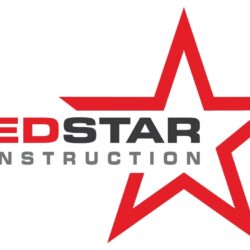The Financial Reporting Standard 105 (FRS 105) is the UK’s accounting framework designed specifically for micro-entities. It simplifies statutory financial reporting obligations while still ensuring transparency and legal compliance. Many businesses benefit from its streamlined disclosure requirements, particularly owner-managed companies with low turnover and few staff. For those preparing statutory accounts for the first time, understanding how FRS 105 affects the format and content of the balance sheet is essential. Many practices offering FRS 105 services advise micro-entities to take advantage of its reduced reporting thresholds, especially when administrative burdens need to remain minimal.
What is FRS 105?
FRS 105 is part of the UK Generally Accepted Accounting Practice (UK GAAP) suite of standards. It was developed to align UK reporting requirements with the EU Accounting Directive, while also protecting micro-entities from the disproportionate compliance costs associated with more complex accounting standards.
The standard applies largely to companies that meet at least two of the following criteria:
- Turnover of £632,000 or less
- Balance sheet total of £316,000 or less
- Ten or fewer employees
Where these conditions are met, a micro-entity may choose to prepare accounts under FRS 105 instead of FRS 102. This often results in shorter, simpler statutory accounts with a more concise balance sheet format.
The Core Purpose of the Balance Sheet under FRS 105
Under FRS 105, the balance sheet serves to provide a snapshot of the company’s financial position at the end of its financial year. It covers the entity’s assets, liabilities, and equity at a given point in time. While the format is simplified, the level of responsibility for accuracy and truthfulness remains unchanged. Many UK-based accountants offering FRS 105 services stress that simplified does not mean casual. The information still forms part of the public record and must be prepared with care.
Micro-entities must still sign a statutory declaration confirming the accounts give a true and fair view, and it remains a legal obligation to file compliant financial statements with Companies House.
Balance Sheet Format under FRS 105
The FRS 105 balance sheet uses a prescribed statutory layout. Unlike FRS 102, there is very little flexibility in the presentation. The structure is condensed to reflect only the key elements necessary for micro-entity reporting. A typical FRS 105 balance sheet will include:
- Fixed Assets
These are long-term resources such as property, plant, and equipment. Intangible assets can also appear here, although, under FRS 105, certain internally generated assets may not be recognised. - Current Assets
This section includes cash, stock, trade debtors, and other short-term resources expected to convert to cash within twelve months. - Prepayments and Accrued Income
These are costs prepaid for future benefits or amounts earned but not yet received. - Creditors: Amounts Falling Due Within One Year
This captures trade creditors, taxes, short-term loans, and other liabilities due within the near term. - Net Current Assets or Liabilities
This is the difference between current assets and current liabilities. - Total Assets Less Current Liabilities
A calculated figure summarising operational net value. - Creditors: Amounts Falling Due After More Than One Year
This includes long-term loans or other debt repayment obligations. - Provisions
Provisions can be included, but micro-entities must be cautious about recognition criteria, as FRS 105 differs from FRS 102 in what qualifies. - Capital and Reserves
This reflects shareholders’ funds or retained profits.
Key Differences Compared with FRS 102
Although both FRS 102 and FRS 105 fall under UK GAAP, there are important distinctions affecting the balance sheet:
- Reduced Disclosures: The key advantage for micro-entities is that no detailed notes accompany the balance sheet. Only minimal statutory statements are required.
- No Fair Value Accounting: Assets must typically be measured at historical cost rather than fair value. This stabilises reporting but removes the potential for upward revaluation.
- Stricter Recognition Rules: Certain development costs or deferred tax assets are disallowed under FRS 105, tightening the criteria for what appears on the balance sheet.
This can create a more conservative depiction of the company’s financial position but supports regulatory simplicity and consistent formatting.
Director Responsibilities
Directors remain legally responsible for the accuracy of the balance sheet. Even though FRS 105 simplifies reporting, directors must ensure figures are complete and verifiable.
They must sign a statutory statement confirming that:
- The accounts have been prepared in accordance with the micro-entity framework.
- They give a true and fair view of the financial position.
- The entity qualifies as a micro-entity at the reporting date.
Filing incorrect or misleading information can result in penalties or reputational damage.
Capital and Reserves Presentation
Under FRS 105, the capital and reserves section must display share capital, retained earnings, and other basic equity components. There is no requirement to break down complex reserves or provide expansive disclosure about movements in equity. This supports smaller companies who want an uncomplicated approach to statutory filings.
The streamlined equity reporting also helps directors and shareholders focus on solvency rather than technical accounting treatments.
Historical Cost Convention
A defining feature of FRS 105 is its alignment with historical cost accounting. The balance sheet values assets at the cost paid, less any accumulated depreciation or impairment. Revaluations and fair value movements are generally not permitted.
This alleviates the need for periodic revaluation exercises, which are common under broader GAAP frameworks. Many practitioners offering advisory-based FRS 105 services emphasise this as a key operational benefit for micro-entities that want predictable and lower-cost compliance obligations.
Filing with Companies House
Micro-entities must still file their balance sheet and accompanying statements with Companies House. However, they are exempt from filing a profit and loss account. This enhances privacy, as sensitive performance data is not published for public inspection.
The filed balance sheet must include:
- A statement guaranteeing eligibility to use the micro-entity regime.
- The director’s signature and printed name.
- The date of approval.
Disclosures Kept to a Minimum
One of the major advantages of FRS 105 balance sheets is the minimal disclosure requirement. There is no obligation to provide detailed notes to the financial statements, no need to explain accounting policies, and no requirement to elaborate on provisions or balance-sheet movements.
Only three statutory statements accompany the figures:
- That the company is a micro-entity.
- That the accounts have been prepared in accordance with FRS 105.
- That the balance sheet was approved by the board.
This keeps statutory document preparation short, understandable, and cost-efficient.
Changes in Recognition Criteria
Recognition rules under FRS 105 can materially affect how a balance sheet is presented. Deferred tax, for example, is not recognised, removing a common source of complexity from the statement of financial position. Similarly, research and development costs cannot usually be capitalised, meaning certain innovation investments will not appear as assets.
Directors and preparers should remain aware of these rules to avoid misstatements. Working with competent accountants or obtaining professional guidance ensures that the balance sheet remains compliant and properly structured.
The Importance of Consistency
Although simplified, FRS 105 still requires consistent accounting treatment from year to year. This continuity supports comparability and prevents manipulation. Any change in recognition or measurement basis should be rare and justified through the guidance of the standard.
Who Benefits Most from FRS 105 Balance Sheet Reporting?
The regime is ideal for:
- Owner-managed micro companies
- Family-run firms
- Lifestyle businesses
- Small-scale consultancies
- Start-ups with limited assets
These companies gain administrative relief without compromising their legal compliance obligations. Directors can prepare statutory accounts faster and with fewer disclosure requirements, helping them focus on operational growth instead of lengthy reporting exercises.
Also Read: How FRS 105 Reduces Financial Reporting Complexity for Micro-Entities



